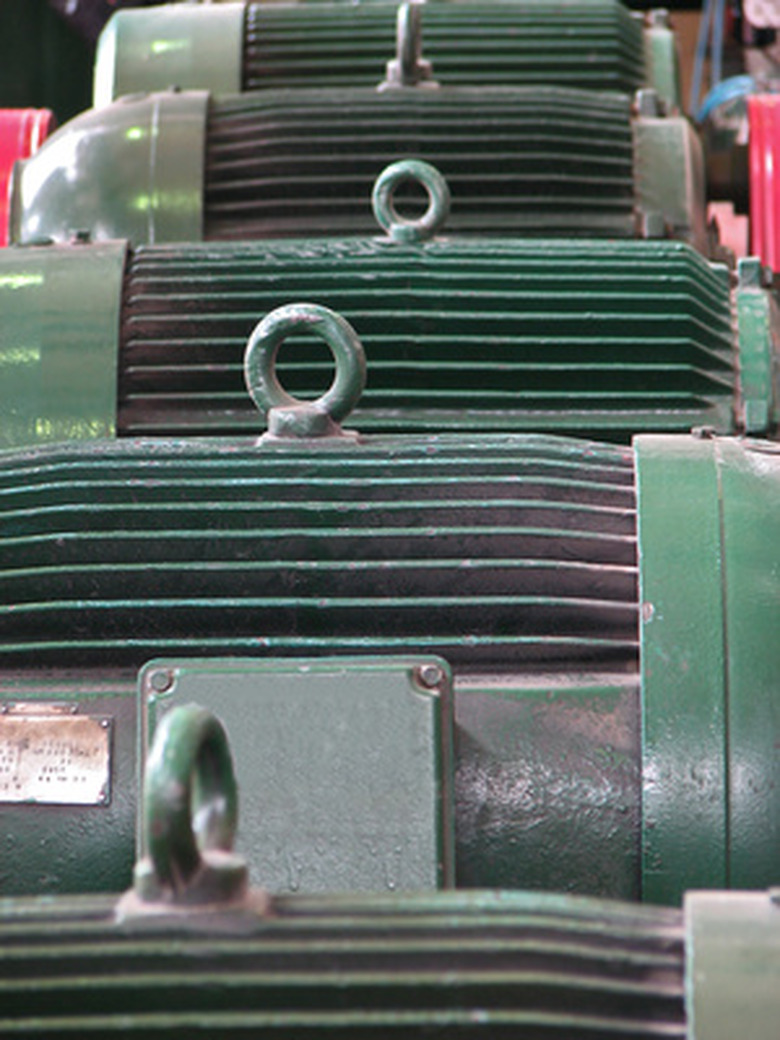How To Size The Electric Motor Circuit Breaker
The circuit breaker is designed to break the circuit, cutting the power to the motor if the circuit starts pulling too much current. The interesting part about motors is that the amount of start-up current and the current the motor uses after it is running is not the same. Depending on the size of the motor, the start-up current can be up to six times greater than the running current. Another issue is that motors require two types of protection, overload and short circuit.
Step 1
Locate the motor data sheets. For overload protection, the National Electric Code requires that each conductor feeding the motor must have an overload protection device. If circuit breakers are used, then each conductor must have a separate breaker.
Step 2
Locate the service factor and horsepower for the motor. These can usually be found in the motor data sheets or on the motor face plate. Check article 430.32 in the National Electric Code. Look to see where your motor falls in their table. This will provide you with a percentage of how much over the motors normal current the overload protection needs to be. If the table says 125 percent and the current rating of the motor is 20 amps, then the overload protection must be at least 25 amps.
Step 3
Look at table 430.52 in the National Electric Code. This table is used to size the short circuit protection.Check the motor data sheets for the motor's full load current. Locate where your motor falls in table 430.52 based on the full load current and motor size. The table will give you the size of the short circuit protection as a percentage of the full load current. For example, if the full load current of the motor is 20 amps and the short circuit protection is 150 percent of the full load current, then the the short circuit device must be 30 amps.
